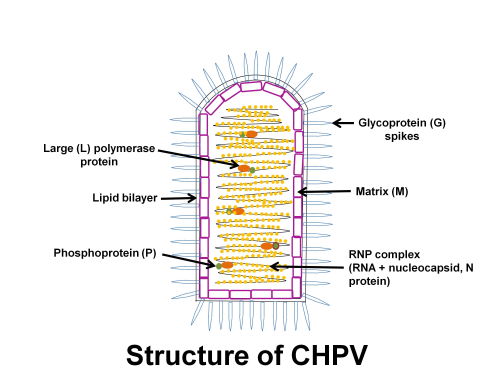Rhabdovirus Research
The Rhabdoviridae contains numerous arthropod-transmitted viruses, some of which infect vertebrates and some of which infect plants, as well as rabies virus and its relatives. The prototype rhabdovirus, vesicular stomatitis virus (VSV), has been extensively studied at the molecular level due to its small simple genome and robust growth in cell culture.
Our group has concentrated on a relative of VSV, Chandipura virus. Chandipura virus (CHPV) has been implicated in recent epidemics of acute encephalitis in several Indian states with high fatality rates in children. Serological studies have shown CHPV infection is widespread in India. CHPV has also been isolated in Nigeria and Senegal in West Africa.

CHPV is a member of the Vesiculovirus genus of the family Rhabdoviridae and is an enveloped virus containing 11,119 nucleotides of non-segmented, negative sense RNA. CHPV has a wide host range and can replicate in both mammalian and insect cells, although the cytopathic effects (CPE) seen following infection differ markedly. The virus is highly cytopathic within a few hours in mammalian cells and establishes a persistent infection with no CPE in insect cells. The sandfly has been implicated as the potential vector for the virus. Mice are susceptible and inoculation into the brain results in fatal encephalitis. The virus has also been shown to cross the blood brain barrier to infect the CNS and cause encephalitis in young mice.
Questions which we aim to address include:
- How does CV survive in persistently infected insect cells?
- Which host proteins are required for CV replication within the cytoplasm of infected cells?
